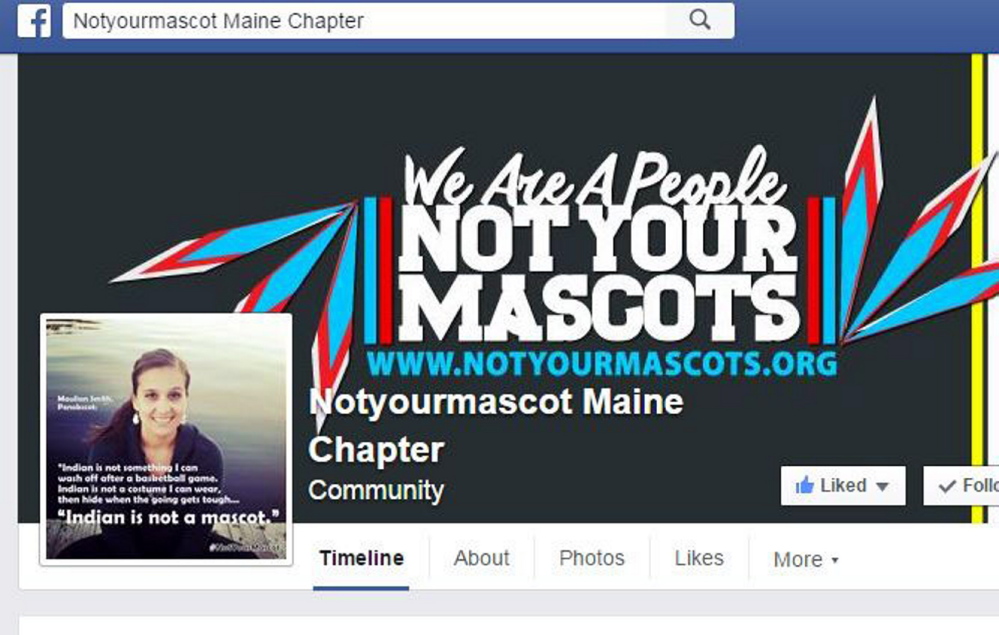Wells High School sports teams are considering giving up the racial caricature of an Indian that is their current mascot. That would represent a significant step forward, leaving only Skowhegan Area High School as a defender of bigoted ignorance among Maine sports teams. Such bigotry, however, did not arise because the white people in Wells and Skowhegan are uniquely mean-spirited — it is a product of a history of conquest and violence that involves the entire planet.
Given the fraught nature of current thinking on race and the anger that it generates on all sides, it comes as a shock to many people to learn that race as a concept is a relatively recent part of human thought. The idea of dividing the planet’s peoples into racial groups emerged only as Europeans set out to explore and exploit other parts of the planet.
It is not a concept born of science, which has never successfully defined the concept of race, let alone proved it valid. It was developed rather as an attempt to justify the plunder of resources, and even the very people of lands outside of Europe. From its inception, the concept of race was always hierarchical, placing white Europeans at a supposed pinnacle of evolution, with non-white others representing more “primitive” stages in the process that had led to the supposed superiority of whites. The concept of race was formed around an outcome — the confirmation of Europeans’ belief in their own superiority — not as the result of a scientific process.
It is widely understood that idea that the peoples of what is now America came to be called “Indians” because of Christopher Columbus’ mistaken belief that he had discovered a sea route to the Indies, the archipelago of islands between what are now Southeast Asia and Australia. What remains invisible to most white Americans is how the very idea of Indianness was a result of European ignorance of the enormous cultural variation among the peoples of what is now America.
When Europeans arrived on this continent, there was no more cultural uniformity between the people of the Atlantic coast and those of the Pacific Northwest than there was between the Vikings and the Romans, yet all were lumped by Europeans into the supposed racial category of “Indian.” To this day, most white Americans are able to maintain their images of what it means to be “Indian” without any awareness that those images are a product of ignorant bigotry. Unfortunately, when the term “Native American” was coined in an effort to move beyond what was recognized as Columbus’ ignorance, it replaced only the belief that this continent was in Asia, not his more important ignorance of the cultural diversity of its indigenous peoples. So while it may be politically correct to call Lakota or Hopi “Native Americans,” it is not correct in any larger sense of identifying who those people are. In fact, it is misleading, as it seems to further validate the belief in race as a concept.
Leaving aside, for the moment, whether it is acceptable to use cultural stereotypes as mascots, the caricature that Wells has employed has nothing to do with the cultures that inhabited Maine before its colonization by Europeans.
Of course it is not acceptable to use cultural or racial stereotypes for anything. In the years since white Americans began to question the use of Indians as mascots, defenders of the practice have often claimed that what they were doing was acknowledging the supposed nobility of the people they were stereotyping. The Portland Press Herald recently reported that a former Wells High School student had told the Wells Mascot Advisory Committee that the stereotype mascot “is an image that is something you should be proud of, the idea of someone being so spiritually, physically and mentally tough … .” While this stereotype is perhaps not as offensive as a stereotype of stupidity and violence, it remains a stereotype, and by lumping all supposed Indians into one image, it denies the diversity — and, therefore, the humanity — of the people to whom it refers.
In fact, white stereotypes of Indians from the 1600s on have tended to fall into a division between those of supposed noble savagery, and savagery that is brutal. Aligning oneself with the tradition of belief in noble savagery is still aligning oneself with a belief founded in ignorance of the human diversity of the people it intends to represent, and what it produces remains an offensive stereotype.
Christopher Lyman is a resident of Searsmont and author of “The Vanishing Race and Other Illusions.”
Send questions/comments to the editors.



Success. Please wait for the page to reload. If the page does not reload within 5 seconds, please refresh the page.
Enter your email and password to access comments.
Hi, to comment on stories you must . This profile is in addition to your subscription and website login.
Already have a commenting profile? .
Invalid username/password.
Please check your email to confirm and complete your registration.
Only subscribers are eligible to post comments. Please subscribe or login first for digital access. Here’s why.
Use the form below to reset your password. When you've submitted your account email, we will send an email with a reset code.